You’re listening to Burnt Toast!
I’m Virginia Sole-Smith. Today I’m chatting with , co-host of the Dolls of Our Lives podcast, co-author of Dolls Of Our Lives: Why We Can’t Quit American Girl, and author of .
Mary is a historian and cultural critic who loves thinking about the stories we tell about ourselves, and the meanings behind our pop culture attachments. Through her podcasting and writing, she’s combined, travelogue and memoir to investigate the origins of the iconic AG brand. And all of Mary’s work is also just super smart, and extremely hilarious.
So, as we are going to discuss today: I am a Samantha and I have a pretty tragic backstory about being a Samantha. Today’s episode was very healing for me. And I hope it will be for all the other Millennials listening, who grew up on this brand and have maybe complicated feelings and experiences with it. Mary is really great holding space for all of that.
But we are also going to unpack the role that American Girl plays in diet culture, and modern narratives about bodies—especially girl bodies. All of that is probably a lot more nuanced than you’re expecting, so get ready for a few plot twists.
And obviously we’re going to need to know: Which American Girl are you?
You can order Dolls Of Our Lives from the Burnt Toast Bookshop, hosted on the website of my local independent bookstore, Split Rock Books—and take 10% off this title and a whole bunch of other great books, through the end of March with the code bookgospel.
PS. If you’re enjoying the podcast, make sure you’re following us (it’s free!) in your podcast player! We’re on Apple Podcasts, Spotify, Stitcher, and Pocket Casts! And while you’re there, please leave us a rating or review. (We like 5 stars!)
Episode 136 Transcript
Mary
I’m a historian by training; I study how culture can be used as therapy, specifically books and reading. But I actually got into history itself through American Girls. When I was finishing grad school, a friend and I started a podcast now called Dolls of Our Lives where we reread the American Girl book series and use it as a jumping off point to talk about history and pop culture.
Virginia
And you have the new book Dolls of Our Lives: Why We Can’t Quit American Girl, which is just terrific. Like, everyone go read it if you haven’t already, because it’s fascinating.
And so, I know everybody who talks to you does this, but I am going to need to tell you my American Girl story.
Mary
Of course.
Virginia
I’m older than you—I was born in 1981. So American Girls came out when I was like, eight, I want to say?
Mary
1986. So you were probably five?
Virginia
Yes. So I am a Samantha. I was obsessed with Samantha. My mom is a big feminist and she brought me up on Mary Poppins. The “Sister Suffragette” song was a very formative text in my youth. So Samantha was a very logical next text for us, because of her stories about being part of the early suffragettes and labor rights movements—in problematic ways, as you unpack beautifully in the book and the podcast.
But I was obsessed with her. I wanted a Samantha doll more than anything in the world. And at that point in time, my family was not super financially solvent. My parents had gone through a divorce. There was no money for a Samantha doll.
Cut to probably 1995 or 1996 when… my younger sister got Samantha.
Mary
So do you two still speak, or what’s the status of your relationship?
Virginia
It was a rough moment for us. My family’s financial status had changed so it was possible to give her an American Girl doll. I had all the books, but I never had the dolls. And yes, was a big moment of reckoning for me, because my sister is almost nine years younger than me. It was like, am I going to, as a high school sophomore, take this child’s Samantha doll for my own? Did I think about it? Yes. Did I do it? I did not. Was I mad when she got the Samantha dress?
Mary
That’s tough.
Virginia
It’s a lot.
I can now reflect on how Samantha is a complicated choice as an American Girl to identify with. My mother certainly would have preferred me to be a Molly. She was steering me pretty directly towards Molly and I was unavailable for Molly at that time. But now as an adult, I do understand.
Mary
That’s a polite way of phrasing that. It’s really interesting that you have a sibling who’s enough younger than you that you can watch her go through a journey you had already been on, but with a different endpoint you might say. She gets a doll, you don’t and what that felt like for you.
And also it sounds like you were at a point when you didn’t think you had permission to maybe steal—that’s one issue—but also just have something that was geared towards a younger person. I think now it’s so much more normalized to want toys at any age.
Virginia
No, I think I was like, I’ve already watched My So Called Life. I’ve moved into my Angela Chase phase.
Mary
Oh my God, don’t even get into that with me. That was a time in my life, that show.
Virginia
Right? How do I go from I am wearing flannel and Doc Martens to I would like to wear the Samantha dress that does not come in my size because now I’m a teenager.
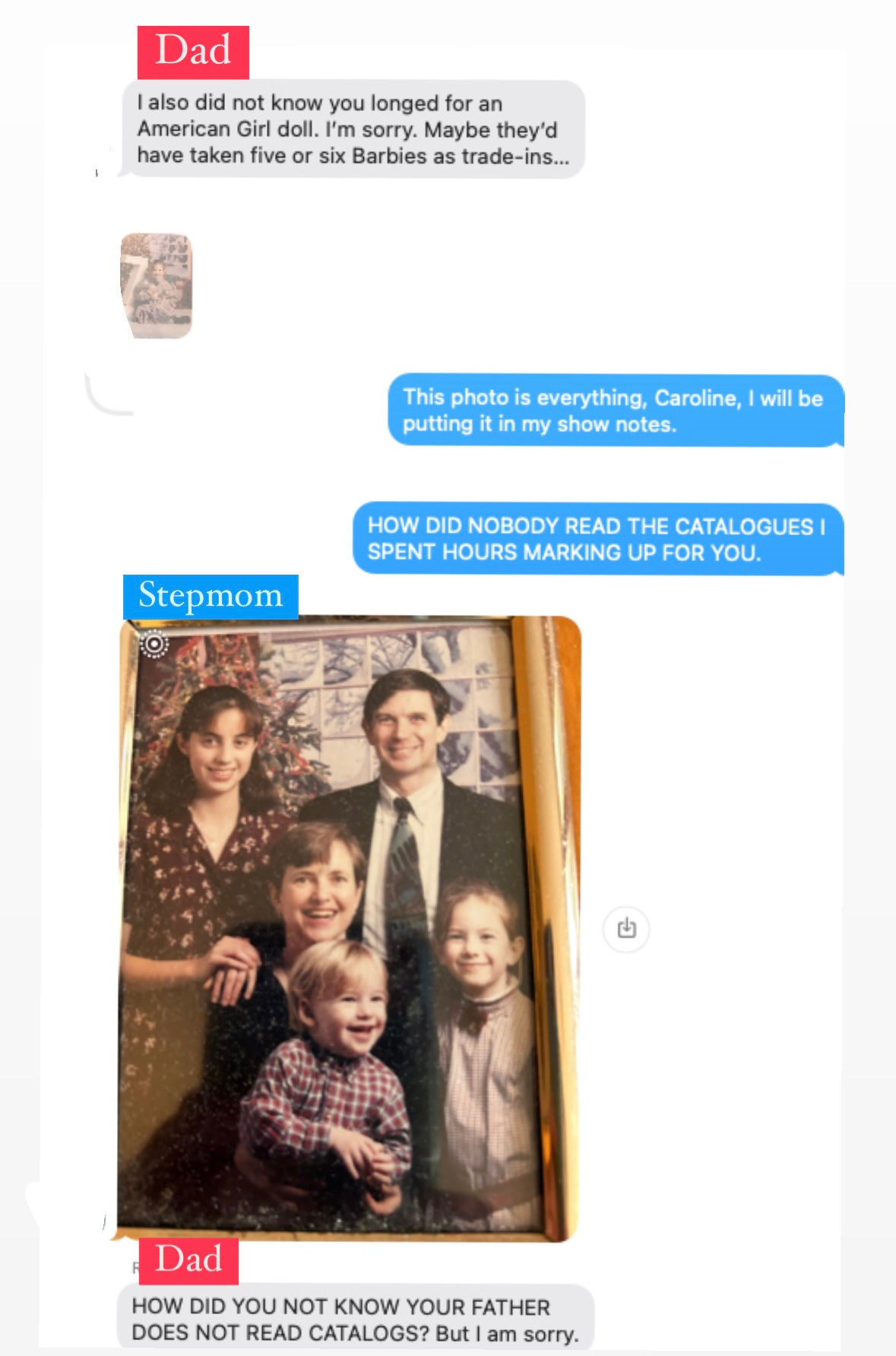
Mary
Well, and that was also a moment, too! A year or two before “Titanic,” came out, so I feel like that was also a big moment for Samantha-core to the point that there was a meme circulating that was like “Samantha was the first victim of the Titanic” and some people just believe that she died on the Titanic. Which incidentally, she did not. Although there is a book about Nellie, her servant /friend, being on the Titanic. An offshoot from the main series.
Virginia
I never read that one, that was after my time.
Mary
That’s a dark book, I’ll just say that.
But you know, it’s hard to be cool and be like, “I’m listening to Sleater Kinney and wearing grunge and riot girl,” and then be like, “I’m also really invested in this Victorian girl who’s a labor queen but lives in a mansion and knows stuff about boating that those of us in my income bracket do not.” It’s tough to carry that duality. Hard to pull that off, I think. Maybe Claire Danes could have done that. I mean, she’s done a lot.
Virginia
I wouldn’t put it past her and were I had to cast someone to play like a teenage Samantha, she’d be on my list. I could see that for sure. Like, Angela Chase-era Claire Danes, obviously. Not the mother and fully formed adult she is today.
I do think there was something about Samantha particularly, because I think I knew that the dolls were out of reach financially for us. It’s interesting that I picked the wealthiest one to be obsessed with. That’s a little thing, although I do think the suffragette movement was part of that.
I should own that while I did not get an American Girl doll, my mom did help me develop quite a collection of porcelain dolls, which I think were oddly more affordable. I remember she got one at Joanne Fabrics.
I don’t know if porcelain dolls were on your radar. I know Allison is more of the doll collector.
Mary
Yes, that’s true. I’m named after my maternal grandmother, Mary Margaret. She was very into porcelain dolls and QVC was her gateway drug for porcelain dolls—and The Christmas Tree Shops. I don’t know if you know of the Christmas Tree Shops? RIP, they just went out of business.
Virginia
I do. I’m from Connecticut.
Mary
Okay, phew.
My grandmother bought me a lot of porcelain dolls that just kind of sat on my shelf. And my other grandmother is the one who bought me American Girl dolls. I was really into the books more than the dolls in large part because the grandmother who gave it to me was very judgmental about the version of girl that I was. It didn’t sync up with what she had in mind. So I think that put me off the American Girl dolls, even though it was such a privilege to have them. It’s the only way we probably would have had them. So, I do know porcelain dolls mainly as creepy things that stared at me in the night in my bed.
Virginia
I had a lot and I do remember having a high school boyfriend come over and be like, “your room is terrifying,” because there were like nine dolls staring at him. And I was like, “So you don’t want to make out?”
Mary
You’re not into that? You’re not into an audience? They won’t interrupt.
Virginia
But cut to today and I have a basement full of dolls in boxes. Because I have two daughters, and they are not doll people at all. They don’t care.
And what happens if you have a baby girl, the American Girl catalog shows up at your house probably before you’ve given birth. I don’t know how they know.
Mary
It’s a Census Bureau thing, I imagine.
Virginia
So my older daughter did get very interested in the catalogs as reading material—I mean, that’s a American pastime for sure—and did ask for an American Girl doll when she was four and then again when she was six. And both times I got her one of course, having known the deprivation that was owning a collection of nine porcelain dolls but no American Girl doll. Again, this is my childhood trauma episode. We got her first a WellieWisher, which is like your entry level. little kid American Girl doll. And then we got her Nanea.
And they never, ever get played with.
Mary
Wow, did she like the books at all? Or just no?
Virginia
She liked the Nanea books. I don’t know if we’ve actually gotten Samantha books, now that I think about it. The books were more popular. But they are not doll oriented. They want a million stuffed animals. They’re very into animals, that’s their passion. I want to see them for who they are and support that, but it does mean I have currently a Nanea doll in a garbage bag that I’m trying to figure out where to donate, plus all the porcelain dolls from my childhood packed in storage boxes because they don’t want them.
Mary
Unfortunately, I’ve heard this before. Parents who grew up without the opportunity to have the dolls and either they get to adulthood and as like a gift to their childhood self they get a doll as an adult, even if they are not parents.
Virginia
That’s for sure what I was doing.
Mary
And then sometimes they gift the doll, and they want to share it with their child, and then their kids are just like, absolutely not. I had a listener who wrote to us and was like, I had this really important moment where I presented a Molly doll to my daughter and she just threw her on the floor and then walked away. Never interested again.
Virginia
I mean, they don’t care, is one part of it. And I also wonder if there’s something about like, I think I was being conditioned towards a certain kind of femininity and have tried to be much more gender expansive with my kids and how we are raising them. So they have more options, which is a good thing, obviously. But also, the dolls in the stories are magical and there’s a lot to love there.
Okay. We’ve now spent almost 20 minutes processing my childhood trauma.
Mary
Listen, I’m here with you. I get it. I mean, insofar as a childless person can understand.
In a sense, you’re showing that Pleasant Rowland dream hasn’t necessarily played out the way she intended, which of course is true. We can talk about all the ways that her brand became something that she never could have dreamed of. You can invent a toy brand, you can’t control how people play with it.
But there’s this YouTube video that we write about in the book, and Pleasant is giving a talk at the launch of Felicity—picture Felicity dolls in glass museum cases at Colonial Williamsburg. And she’s basically like, “My dream is that girls will get this doll and then they will play with it with their moms and then that will be passed down to their daughters,” and so on and so on and so on.
It’s this very gendered female experience, but she’s seeing this generational cycle. Like these stories and dolls are going to live forever in your family tree and perhaps in years it will come to an abrupt stop but maybe a future generation will pick it up. Who can say?
Virginia
It’s true.
Mary
I’m trying to paint a story of hope for you. Whatever you need, if you want to be sad you can also be sad.
Virginia
Well, thank you for that therapy session, but we are actually here to talk about American Girls and the role that they’ve played in diet culture! I thought one interesting place to start is how American Girls were actually developed in very deliberate opposition to Barbie.
Mary
Yes, this is quite a tale because when people hear about American Girl they think there’s real hypocrisy in Pleasant Rowland. Because she ends up selling her brand to Mattel—which obviously owns Barbie—and yet she began the brand in large part in angry response to Barbie.
So she, as she tells it, goes to malls to find gifts for her nieces and is really appalled by what she sees at toy store. She herself is childless so she doesn’t know this experience as a parent, but she’s trying to buy educational gifts. She’s a former teacher.
She’s really appalled by Barbies, particularly, because she views them as sexualizing children or asking them to grow up too soon, specifically girls, by presenting an unrealistic body type. Barbie is an adult and it seems at odds with what girls should be given as educational tools.
I should also say she was very upset by Cabbage Patch dolls, which were really having a moment in the 80s when she was getting into this. She called them ugly—that’s her word, not mine.And Teddy Ruxpin which was a kind of creepy teddy bear that would read you books from a cassette tape you would play in his back. Like, I put my Janet Jackson cassette there once and it came on when I was asleep at night, again with my porcelain dolls there. I am not the same since. The version of me that existed before that moment is gone.
She’s also coming up in a moment in the 80s when Reagan is president. We have this harkening back to this imagined past where people were like, you know what? The 70’s were wild, like, disco, Watergate, huge discontent over Vietnam. Everyone’s upset, jobs are moving to the south and then overseas. The economy is flagging. Reagan comes in and is like, “Hey, guys, I’m proud to be an American.” He’s trumpeting all of these pro-American policies that are largely, hugely conservative and built on a vision of American history that never existed. So that’s kind of happening in the background.
So Pleasant is like, Barbie has really unrealistic body expectations, sexualizing girls, and also no one understands like the power of American history. I’m going to be part of this.
Virginia
That’s such an interesting mix of goals and values. I think part of the reason I was on the porcelain doll train was because my mother definitely banned Barbie. I mean, I still owned a lot of Barbies. It’s complicated. But there was a lot of anti-Barbie sentiment in my house for sure. I can understand the the body criticism and the unrealistic ideals. I’m here for all that, but then to also be like, and we need to teach children the correct whitewashed version of American history?
Mary
Well, because it wasn’t just whitewashed history. She is inspired to create American Girl by two things. One, she goes to the mall and looks for a gift and is like Cabbage Patch dolls are ugly and Barbies are a definite no.
And I should add, when Barbies were invented, they were inspired by a German doll that was actually almost like a sex toy. It was sold to truckers at gas station. So, it was not something that was like this is going to teach you the beauty of being a woman or American history or like anything necessarily positive. Not trying to teach you anything and definitely an adult.
When pleasant goes to the mall, that appalls her. That whole trajectory. So that’s in the back of her mind. She then goes on vacation. Now, how many of us come up with a business plan after we go on vacation? But she goes to Colonial Williamsburg, which is a living history museum where people pretend it’s 1774, I think. She’s noticing that this museum is really amazing and their dedication to recreating this time, but there’s nothing that puts kids and their stories at the center. And she thinks she can get more people to care about history if you put specifically girls at the center.
And that actually is a radical thought because even as professional historians, we’re not putting children at the center of any story in American history. So those two intentions of presenting something that’s age appropriate for girls and something that puts them at the center of the story, that’s really what drives her to make American Girl.
Virginia
I think that was what I remember, feeling really transported by in the books. These girls they have so much agency in their worlds that they’re moving through. You feel really a part of their adventures and sometimes they are doing absolutely wild things. Kirsten in the cave with a dead body. I mean, there’s a lot that goes on.
Mary
I will never let this go. The fact that so there’s a plot in the Kirsten books where her family is not doing well, they’ve moved from Sweden to Minnesota in the 1850s and it’s the winter and she and her brother end up hiding and taking shelter in a cave during a snowstorm. And they find the dead body of a trapper there and all of his pelts are there. They’re basically like, oh my god, we’re going to steal this dead man’s pelts and sell them. That’s going to save the family.
One, that’s a real plot line, but two—and this is what I will not let go of—the illustrator decided of every scene in this book, we must depict the dead body frozen in the cave for children. To really hammer it home that he’s dead. Wild choice.
Virginia
But that was a pivotal moment for her character so I respect it.
Mary
I mean, yeah.
Virginia
We needed the visual.
Mary
I guess she was like, “I’m scrappy.”
The history of the West isn’t what you think. That narrative of the West is pretty traditional for that time, but yeah, wild.
Virginia
Well, to bring it back, I do think it’s interesting that Pleasant was appalled by the artificial beauty standards of Barbie, the unrealistic body ideals. And yet, the dolls she designed are not fully inclusive. There is only one American Girl doll body type and the girls are all thin as depicted in the books. As far as I know, there has not been a fat American Girl doll.
Mary
There has not been a fat American Girl doll. In thinking about the design intention behind the dolls, the main thing Pleasant had in mind was that they always be frozen at nine years old.
Mary Wiseman, who helped develop Felicity, told us that Pleasant shared with her that the doll mold was something that she was attracted to because it resembled her own face. So the dolls actually resemble Pleasant in terms of their faces. In terms of their bodies, the only requirement Pleasant had was that they be huggable by kids. But there is no fat American Girl anywhere in the canon, and no presentation of even a friend of or anyone else in the world of the dolls who is fat.
Virginia
That’s some real erasure. It’s interesting, too, because nine is a really interesting age because it’s right when or right before a lot of girls go through puberty and their bodies change dramatically. While I appreciate wanting to give kids the opportunity to stay childlike and keep enjoying doll play, it’s also doing a disservice to the fact that some nine year olds already are wearing bras. Some nine year olds are getting their periods or going to have their periods very shortly. If you look at what actually happens to children’s bodies at ages 9 and 10, a lot of them are no longer in a child presenting body—and yet they are still children. It is anti-fatness that makes us not want to look too closely at that.
Mary
I think that’s 100 percent right. Actually, in preparing for our conversation, I was thinking back to my own development and I remember still reading American Girl books when I was in fifth grade. That’s the first year I had a sports bra because I started to develop and in the books nobody was talking about that. And it wasn’t just the American Girl books, no one was talking about that happening. Like, Are You There God? It’s Me, Margaret is older. I remember just feeling so strange because that was my experience.
Virginia
And again, when I think about kids today encountering the books—the population data is sort of murky and hard to parse out how much puberty has really dropped younger and how much was it we only used to study thin white kids. Now, if we study kids of different race and ethnic backgrounds, we see body diversity. Regardless, as they’re trying to diversify the dolls, there’s certainly an argument that that should include way more body diversity than we see.
Mary
You can look at the brand and see where they’ve acted on feedback that people have given them about being more inclusive, whether of ethnic or racial backgrounds, geographically, where they set girls’ stories, but I’m not seeing that they’ve ever been receptive or demonstrated feedback about that, which is seemingly a choice. You just imagine what it would mean to have that and what conversations they’ve had internally about why they won’t do it.
Virginia
It’s interesting, too, because there are the historic dolls, but then there are also the make-your-doll-look-like-you dolls. So they very specifically market the idea that you can have a doll that looks like you, but not if you’re a fat kid.
Mary
Right. And even that is kind of a wild eugenics experiment. I don’t know if you’ve seen the catalog page where it’s like, get a doll that looks like you. It’s all these different faces of varying shades. It’s like, okay, I think I see what you’re trying to do but this is kind of coming off a completely different way maybe than you intend. And, the more that they push diversity, sometimes it just emphasizes how much they consider the norm to be white middle class, which is perhaps not what they’re going for, but it’s kind of what’s happening.
Virginia
I hadn’t realized until I read that in the book, about the faces being inspired by Pleasant’s face, how similar the doll faces all are. I think I thought they had sculpted a totally different Samantha face and a Felicity face.
Mary
I think she licensed a German mold, ultimately, to do the original dolls. But I know that the Samantha face mold and Molly are identical, which I still refuse to accept because to me as someone who’s a Molly, the Samantha is so different. But I believe it’s actually true.
Virginia
That Rachel Leigh Cook movie was true—if you take glasses off a girl, she’s a radically different person.
Mary
She’s All That. Yes, of course. Exactly.
Virginia
I’m upset.
Mary
It’s deeply upsetting if you identify on either side of that divide. Can I fathom myself identifying as a Samantha? Like, no. Somebody wrote to me and was like, “It’s homophobic that you don’t identify as a Samantha because obviously she’s the gayest American Girl doll.”
Virginia
Interesting.
Mary
I refuse to take that on. I mean, Molly wore jeans and saddle shoes. That’s kind of what spoke to me at that age as a young queer gal.
Virginia
There’s a gay read of Molly for sure.
Mary
I mean, there are gay reads all of them if you want that. It’s interesting that there is so much sameness there in their production and very little diversity.
The only thing I could find where you see a fat body is the most recent publication of The Body Book that came out in 2022. I think that was very controversial.
Virginia
Is this The Care and Keeping Of You? Or there’s another body book?
Mary
So there is another more recent body book that is called A Smart Girl’s Guide: Body Image: How to Love Yourself, Life Life to the Fullest, and Celebrate All Kinds of Bodies. There is a true crime story to be told about this and I would love someone to get into this. In 2022, they put out a book called A Smart Girl’s Guide: Body Image. And there are a bunch of Smart Girl’s Guides to social media, self esteem, all of these different topics, and they’re all very well done.
If you look at the cover of the book, there is a a fat body or a bigger body than just the normal skinny girls on the cover of the book.
Immediately, this book was controversial. Not because of how it dealt with body positivity per se, but because of how it dealt with LGBTQ topics, specifically, messages to trans kids seeking affirmation and help from a parent or an adult in your life. The boo includes advice like, if you don’t feel comfortable talking at home, find an adult you know who you can talk to about this. If you don’t have an adult you trust, here are organizations across the country that can help you. That was the controversial quote from this book. And readers were like, “How dare American Girl tell my child to do gender modification or suppress puberty!” and all these things the book absolutely does not say. It basically says, “seek out support from an organization.”
Originally the brand stuck by this book. There are chapters called Love Your Body. It is an evolution from the Care and Keeping view, which is about a decade or so older and has very dated views on bodies and does not mention trans issues does not mention queerness.
So this book was a major update and I think in the right direction, but almost immediately there was this firestorm. People are spamming the book page with reviews that are like, this is terrible, this should not be sold.
Tragically, on the American Girl website, all the other smart guides are still being sold and that one is no longer on this site. It’s gone.
Virginia
It’s gone. I can find it on Amazon and on Split Rock Books, but it is not on the American Girl website.
Mary
Right. So it’s really sad, because somebody made an inquiry about this to the brand. I think the only thing they said was “it’s out of print.” So it’s being restocked, but it has never been restocked.
Virginia
Hmm, interesting. And interesting that you wouldn’t put The Smart Girl’s Guide to Manners out of print.
Mary
That one is fine, but this book, which talks about body positivity, and it’s okay to question your gender and it’s okay to be queer and all of these things that are totally healthy questions to ask about yourself at any age. The fact that it’s immediately taken off the market, the fact that they did support it, and then they completely reversed and now they don’t even sell it anymore—it’s just so tragic to me.
Virginia
I am mad for two reasons. I am mad about what happened to this book. I’m also mad about the timing of it, that I wasn’t able to get this story into Fat Talk in my puberty chapter. Because I was writing Fat Talk in 2021 and 2022, so it came out presumably after I’d finished the book.
Mary
I was thinking about you actually when this all happened, because it was so primed for you to step in.
Virginia
I missed this story, guys. I apologize.
Mary
I almost didn’t bring it up because I didn’t want to upset you. But this is so your jam, I need to hear you on this, because you know when you feel such rage, you don’t know what to do with it. That’s how I feel about this. I’m just so angry on a basic level. We can imagine what’s motivating it, which is this conservative push to ban things they don’t agree with, but I’d love your take on it.
Virginia
Having a brand called American Girl is super problematic, as we are now understanding gender in radically different ways than Pleasant Rowland did in the 1980s. But this seemed like a great opportunity for them to be pushing outside the binary. Encouraging kids to get support when they’re struggling with big things doesn’t feel radical. Having a book with a fat girl, we’ve got a kid in a wheelchair—I guess I shouldn’t even say girl because we don’t know. But we’ve got four kids, very diverse and joyful. This just looks like a great book that I would totally buy for my 10 year old.
Mary
And the fat girl is on the center of the cover, which I think is so cool. They’ve put her at the center of the story of the cover of this book.
Virginia
Yeah, she definitely is in the center, which is great. And the subtitle—How to Love Yourself, Life Life to the Fullest, and Celebrate All Kinds of Bodies—nothing about that should be controversial. Nothing about that needs to go out of print.
Mary
Even the gender affirming piece of it, it’s literally just saying if you have questions seek help from these organizations that are designed to give you information, not tell you what choices to make for yourself or your body, but literally give you information and support. The reality is a lot of kids don’t have that at home! I grew up in a religious family. Conversations about queerness did not happen in my house.
This is telling for people who think if you just censor information, your kids will never find it or it will never affect them: I have two brothers. One of them is also gay. So, 2/3 of my parents children are gay. Their batting average is wild. They got to us anyway. How does it happen? How was I so converted so easily? And it’s because, of course, it has nothing to do with outside influence. It’s internal.
I think a lot of historians want to tell narratives of progress, things getting better all the time, which is kind of an unhealthy impulse. But this is an area where you can kind of see we’re kind of going backwards in terms of trying to control culture, to make everyone live by some minority view. It’s not healthy.
Virginia
It’s super upsetting. And it’s super infuriating that American Girl caved to the pressure. It speaks to the mall-ification of the brand. This does feel like Mattel saying, “We can’t rock the boat in this way.” I don’t know where Pleasant herself stands on this issue. Maybe she would not have been doing anything progressive on this. But I can’t imagine if there had been push back to some plot point in a Kirsten book or Felicity book, that she would be like, I’m going to just stop publishing this book. It just feels like she would have been more like, no, this is the story. This is the history I’m telling, for better or for worse.
Mary
I think they have a track record of letting the market influence some of their choices, like when they stopped selling certain dolls or books based on what’s selling and unfortunately, that has impacted dolls of color, characters of color, like Cécile, who wasn’t on the market for that long. But, you know, in large part, I think that the people who were integral to the founding of the brand—from what I’ve heard, anyway—are very adaptable and are willing to even admit missteps in the early days with some of the ways they presented stories or characters.
Like, I’ve heard Valerie Tripp is incredibly inclusive and supportive. And I feel like if given the chance to even rewrite some of the stories she wrote in the ’80s she would do so, probably in a more inclusive way. So is this the Mattel suffocation of American Girl?
Virginia
Mattel also brings us curvy Barbie and gender neutral Barbie or gender creative Barbie, whatever they went with. I think what Mattel does about all of this is similar to what a brand like Old Navy does, where they know they can get a lot of PR and create a lot of buzz by doing something that looks inclusive. Like Old Navy is like, we are launching a new special plus size collection and it will be in all the stores and all bodies matter and blah, blah, blah. Mattel will do that with various “pushing the envelope” Barbie dolls, and then when they get pushback or just when they don’t do it well, the core consumer for that new product doesn’t show up.
Like with Old Navy, the sizes are never actually there and it all kind of falls apart. They just quietly stop doing it. I have a theory that part of that is it is a better business strategy for them to occasionally be able to make a big splashy announcement about doing the inclusive thing than it is to just sustainably do the inclusive thing all the time. They want the PR buzz of doing it, but they don’t want to keep doing it.
Mary
I think that’s absolutely true. You can kind of see that with all the brands during every themed month, like Black History Month at Target when they’re like, here are our Black creators and we’re centering their products. It’s like, what would happen if you actually did this all year? During Pride month, same thing. I’m not necessarily saying I’m opposed to rainbow sequin Converse sneakers—how could anyone be opposed? I don’t think it’s humanly possible, but I just wonder what would happen if you made it a point of your brand, like this is an inclusive brand 24/7/365. It’s not just a marketing ploy.
With that in mind, it’s like, they haven’t even tried this as a marketing ploy.
Virginia
This body image book feels like someone wanted to do the right thing and got away with writing this book.
Mary
From what I understand, it’s a very different part of the company. Like, they actually outsource the writing of these books to freelancers.
Virginia
So they probably had somebody who was like, “let’s do this. Let’s do it well.” And then when it blew up and there was backlash, the company was like, just kidding.
Mary
Just kidding! We’re not doing that. We’re going to say it was a computer glitch. It’s not on the website, but the manners book that will never go out of print.
Virginia
Don’t worry, we have manners for you.
Mary
Don’t worry, Grandma, we’re going to teach your granddaughter what fork to use. No problem.
Virginia
And there is a book called the Smart Girl’s Guide to Liking Herself which I would be curious to find out the timing of. Like, is that a replacement title?
Mary
Yeah. And considering how many adults I hear from who still turn to the Care and Keeping of You, which came out when we were growing up…
Virginia
Yeah, it came out in 1998.
Mary
Considering what an impact that made in people’s lives. We talked to a bunch of women who said, my mom wouldn’t talk to me about getting a period. One woman said, when I got my period, my mom literally slid this book under the bathroom door, and was like, here, figure it out. Which, like, what a terrifying thing to have to figure out by yourself. But you can see the need for this in a world where we’re also being increasingly put in charge of our own healthcare. That’s presented as some kind of individual right, instead of late stage capitalism. Like these books actually do play a big role in people’s lives when they’re feeling vulnerable.
Virginia
I do want to talk a little more about Care and Keeping of You because I think it’s a really interesting text. I mean, I think there’s a lot it does tremendously well. I was 17 when it came out, so it wasn’t the puberty book I used. But my younger sister, sure. It’s a hugely important text. And again, on body stuff, on body size stuff, it leaves a little to be desired.
I did dive into that for the puberty chapter in Fat Talk. There’s a chapter in it, called “Belly Zone” which does make sure to emphasize that there’s a wide range of weights that doctors consider normal for any girl, depending on her height and basic body type. Red flag on the phrase “basic body type.” But then it goes on to both say, like, don’t diet, it’s not good for you. But “talk to your doctor first to find out if it’s necessary,” which certainly implies that for some kids, it might be necessary if you’re worried about your body type or whatever.
Mary
I mean, it’s not great. Just to put it in context, this was coming out at the same time period as the movie Heavyweights and other things that are making light of diet culture while also reaffirming it. I think that that was the moment that was driving this.
I’m not defending them by any means, because this book has a lot of issues. I think the author has sort of acknowledged that at this point. But it does seem like they want to have it both ways in this passage that you shared. They want to both affirm there are many different body types—and yet, the “basic body type” phrase really jumps off the page, because it does seem to, at the last minute be like, but there is a real body type that you should be shooting for and that you need a doctor to tell you if you’re there or not.
Virginia
It’s interesting, again, in a book about puberty, where kids’ bodies are going to be changing so rapidly. There are a lot of common growth trajectories where kids get rounder for a few years, then get leaner. Or this was my trajectory: I was a thin kid who became a small fat adult. It’s not like the size you were, that nine year old that doll that Pleasant made, is going to perfectly mimic the size you are for the rest of your life. It’s not giving a lot of possibility for change, which a book on puberty should be all about. Like, change is what we’re here to do. Change is a good thing. It’s normal. It’s healthy.
Mary
I’m just rethinking my own experience. I remember reading this book when I was 11 or 12 and that’s when I started having chronic health issues that I’ve had my whole life. I spent a lot of my teen years in hospitals. When you have GI related problems, so much is mapped on your weight and that is made to seem the same as health. Like I lost 20 pounds in a month at one point, which is very unhealthy. Which should seem obvious, but people in my life were like, oh my god, you look amazing, like, what are you doing? I remember going to a doctor and he was like, wow, your BMI is perfect. You’re amazing.
And it turned out I had this very rare GI disease. So I was not healthy or perfect and this person just was ill equipped to diagnose me. But so much of weight being mapped onto health and elided with health is so toxic. So it’s not even just your appearance. It’s people using the language of health to manage weight or manage your expectations of what your weight should be can be so damaging, right?
Virginia
Those stories will never not enrage me. The things that doctors say to kids, particularly between the ages of like 9 and 14—a lot of shit goes down there.
Mary
A lot goes on. Yeah, it’s not okay. I also remember the part of this book that’s about breasts and getting a bra. I remember that being really fascinating because I had really big boobs as a sixth grader and I was so paranoid about that.
I remember the book talking about weight in weird ways around that, too, where I’m like, what’s determining this and I was like getting obsessed almost in eugenic sense. I’m like, this is my mom’s fault or my grandma’s, because they have bigger boobs. And somebody needed to just sit me down and be like, you’re fine. Instead I had this book and Oprah’s episode. Did you ever see that Oprah episode where she was like, I’m going to teach you all about bras.
Virginia
70%—or maybe it was 60%? I don’t remember the stat, but American women are wearing the wrong bra size and we’re all going to get fitted today.
Mary
I mean, I look back and I’m like how are we alive when I got most of my health information from Oprah and this book?
Virginia
Teen magazines were my other main source. Which leads us to the American Girl magazine. I was fascinated by this chapter in your book. My first job out of college was at Seventeen Magazine so I have some tales to tell.
Mary
I’m listening.
Virginia
Early aughts teen magazine and culture was a time in my life that I try not to reflect on too often, to be honest. I’ve talked on the podcast plenty of times about women’s magazines making a lot of really harmful body content.
And Seventeen was this interesting place where there were a lot of really feminist editors on staff who were like, “We need to help these girls with eating disorders. We have to help these girls understand consent and rape,” and they were trying to do those sorts of stories. And then right next to it, would be like “best bikini body ever” and “get your prom body!” Just toxic, toxic nonsense. And I worked on both types of content and didn’t, until far too late, see the disconnect there.
American Girl Magazine feels like a product that was developed very much in opposition to mainstream teen and tween girl magazines around all of that.
Mary
Yes. So, American Girl Magazine in a lot of ways is the radical pocket with American Girl. It had its own staff. It was in the main building in Wisconsin where American Girl was based. But having talked to one of the former editors, it was just that people were extremely earnest, really passionate about what they were doing, and really insistent on some core values that came from Pleasant, initially. Which is that there would never be a celebrity in the magazine. The magazine would only feature “real girls” who read the magazine. There would be no child models on the cover, there would be no conversations about boys, makeup—anything that might age them out of where they were.
It had a lot of features that allowed girls to talk to one another in the pages of the magazine. There was this section called “Heart-to-Heart,” which is the most primal part of this magazine I’ve ever read. It’s one theme, like best friends, and then people would write in with their own very earnest experiences of do you need to have a best friend? And people would respond. Or they would cover girls who had different hobbies or interests. It was just incredibly sweet. I could find no main articles about your body at all, other than how to make a ponytail in different ’90’s ways, which I could never achieve. Or how to do a French braid, I mean fishtail braids. I’ll never get there. I’ve just kind of had to accept that about myself.
But they had features like “100 Great Things About Being a Girl.” I remember one of them was the Rosie O’Donnell Show, which is kind of a question mark, but I’m not going to question it from the distance of 2024.
Virginia
At the time, it might have been one of the great things about being a girl?
Mary
I mean, at the time, yeah, absolutely.
And I remember when it was like “we could have woman president soon.” That was too dark for me to look at when I was writing the book and going through my archive. That one hurts.
There’s also a section at the back called “Help” which had advice offered by the editor in chief and girls would write in with all kinds of questions. It’s really sweet when you think about the fact that a lot of them were like, I really am mad at my parents, they won’t let me do whatever I want. And their parents would have to help them mail this letter in. The advice is always for the most part really sweet.
In talking to some former staff members, they were really insistent that even the cartoons, like everything would be inclusive. There was more diversity in the depiction of girls in the magazine than in the main brand. They always considered and made sure they had representation of girls with disabilities, all kinds of issues that were really on their radar even long before it was on the radar of the main brand.
Virginia
So I’m looking at this picture you sent—I assume we’re talking about the second letter here.
Mary
Yes. Signed by “Hungry.”
Virginia
So this girl wrote in:
I’m always hungry. I eat and eat but I’m never fall. Once in a while, I eat a huge dinner and I’m full for about two minutes and then I’m starving.
Hungry
And immediately its like, “What messages were you getting about your appetite in your house?”
Mary
It made me so sad to read this. This is why these this section was one of my favorites because they printed very serious stuff. And often, just really earnest questions like, I’m afraid my parents don’t love me because my we had a new baby.
But yeah, so it’s from 1998 if that matters. That’s the year it was printed.
Virginia
The response is, for 1988, pretty great. It says,
“It’s normal for girls to feel hungry when they’re growing. You may be eating just the right amount for you. Talk to your doctor to make sure.
I don’t want you to do that, given how doctors feel about this. But okay.
Or it may be time to take a closer look at what you eat. Are you getting balanced meals? Your body needs protein, like eggs and meat, as well as fruit, vegetables and carbohydrates, such as bread and pasta.
Honestly, in 1998, to be willing to name pasta as a food we’re allowed to eat feels a little radical. And then it does say,
If you’re eating only spaghetti, for example, you will be hungry for the other foods you need. But if you’re eating because you feel sad, worried or afraid, ask a parent to find a counselor who can help you.
I mean, I have notes, but they are the notes of 2024. For 1998, that’s about as good as we could do. Because at least it’s not demonizing eating. It’s not prescribing a diet. It’s certainly better than I would have expected.
Mary
What do you make of the “if you feel sad, tell your parents you might need a therapist,” if you’re eating because you’re feeling feelings.
Virginia
I mean, my take is always like, you deserve tools. You deserve support for your feelings. You deserve tools to cope with your feelings. Eating is a perfectly valid tool for coping with feelings. A lot of us eat when we’re stressed or sad and need comfort, and that is a benign coping strategy.
But they’re not saying you should stop eating because you’re feeling sad or afraid. They’re just saying you might deserve some support on that.
Mary
I went through I want to say like a decade of these magazines. I bought this lot that was from a funeral home, but they had like a decade of these magazines. This was such an important magazine for me and I knew we were writing the book, so I went through a decade of them for this, and I didn’t find anything that was about dieting, about any negative body image stuff.
And I’m not trying to be an American girl apologist. Like, I certainly am willing to call them out when needs be. But yeah, I mean, as you’re saying, for 1998, I didn’t think this was that crazy.
Virginia
And also knowing the word count restraints this writer was under. At Seventeen, one of my jobs was writing a similar advice column, which by the way they were letting the 22-year-old editorial assistant do. Something else to unpack, because we got similar questions at Seventeen.
We got questions about abusive parents and eating disorders and the darkest stuff you can imagine girls going through. It would break my heart that we got the emails because they’re writing to a magazine instead of having someone in their life they could talk to. We did have a system at Seventeen, and I bet American Girl had the same system, where we did have a dedicated reader mail editor whose job it was was to send resources directly to the girls. She didn’t publish in the magazine at all, her whole job was reading the letters, flagging the ones that the editors might want for content, but otherwise getting them—and it was I’m sure it was a lot of form letters—some resources sent back. Which was something.
But yeah, I would pick out three letters to answer and then I’d have 100 words to try to deal with this child’s trauma. You’d write a whole thing and then they’d send you the layout back and be like, “you need to cut three lines, we’re over by three lines.” Oh, my God, print journalism, guys. It was rough. So you’d be like, what piece of advice should I take out so that we can fit it in the column?
Mary
How would you navigate that?
Virginia
It was a lot. It was a lot. Part of my tenure there, we were edited by Atoosa Rubenstein, who’s somewhat well known for being a very big personality editor who edited everything with a pink pen. So you’d get your proofs back covered in pink pen, and you’d cry a little in your office, and eat some chocolate, because eating with feelings is fine.
Mary
Absolutely necessary.
Virginia
And then you’d figure out how to include any useful amount of advice in this two inch—look how short these columns are—in this two inch square box.
Mary
It’s sounds impossible. It sounds like if I worked there, my advice would have been like, can someone help me? Get me out of here.
Virginia
And then they’d be like, “We’re making the art bigger so you’re going to lose five more lines.”
Mary
“We’re doing a feature on low rise jeans and we need more examples.”
Virginia
We’re going to mostly just show torsos.
Mary
I mean, that was a whole moment in time.
Virginia
It was a lot.
Butter
Mary
I have two separate Butters, if that’s okay. I’m really into comfort pop culture things that make me feel good. And eating chocolate when you’re sad, which I also do.
So Murder She Wrote is my number one recommendation forever, because it always hits. It’s a woman, Angela Lansbury, solving murders as a novelist, also being pursued by many men. Nothing better.
Virginia
So many men.
Mary
And she made a point of saying, “My character will never get married, because I don’t want to be tied down.” I think she’s an icon for that.
Secondly, and this is food related because I’m a very dessert-centered person. I read Barbra Streisand’s memoir and the best moment in it, which no one is talking about, is when she talks about training as an actor and being a method actor. And at times, that was hard because she was playing opposite men she was not actually attracted to, so it’s hard for her to act attracted. So the way she got around this—and this is an iconic moment—is she would put a piece of chocolate cake in the wings behind him. So when she had to act opposite him, there was something she was really attracted to that she could use in the scene.
And that has possessed my brain since I read it. I can’t stop thinking about it and she’s a hero for that.
Virginia
I wonder how the guy felt knowing that. I wonder if he saw the cake. I hope he thought about that.
Mary
Yeah, he probably needed that takedown ego-wise, maybe? I don’t know. Maybe not.
Virginia
I think I’m going to do a food Butter too. I’ve talked about this book on the podcast before—it’s the Snacking Bakes cookbook by Yossy Arefi. I recently made the loaded chocolate chip cookie bars out of this cookbook and they are so good. Like, I made them a week ago and obviously we’ve eaten them all. I’ve eaten them all. My children don’t like things with nuts and coconut. I love my children so much. I feel like this episode has come out as a little anti-my kids, and I want to be clear that they have a lot of good qualities, but their feelings on American Girl dolls and cookies with things in them are not their strengths. But they were delicious. They’re a chocolate chip cookie bar, so kind of a blondie situation but with coconut and walnuts.
Mary
Oh my gosh.
Virginia
It was a substantial snack. I’m really excited to make them again. Probably later today, I think.
Mary
Okay, I love that for you. I want to make those. Have you ever made Dolly Parton bars or seven layer bars? It kind of sounds like that but better.
Virginia
I love seven layer bars! My mom makes those for me every Christmas. And I do love them, but some seven layer bars are so sweet. You can’t eat too many. The sweetness can become a barrier at a certain point.
Mary
The condensed milk.
Virginia
And these have a little more of a salty texture.
Mary
And I know you’re a Connecticut resident, so I just have to add as a food recommendation Munson’s Chocolate if you’ve never had it. Get into it.
Virginia
I’ve never had Munson’s chocolate!
Mary
What!?
Virginia
Wait, what part of Connecticut? I’m from near New Haven.
Mary
I’m from Central. It’s a tiny state, but people have very strong feelings about different parts of the state. I’m from the Hartford area, so I grew up in Windsor. So you have better pizza, but we have Munson’s Chocolate. I’ll send you some, it’s my favorite chocolate in the world.
Virginia
Okay, I now have to be angry at my parents about the lack of a Samantha doll and the failure to expose me to that chocolate. My mother even worked in Hartford for most of my childhood. We’ll take a closer look at that later.
Mary
I have stirred some things up here. Sorry to your mom. My apologies. I hope Virginia share some of the Munson’s with you.
Virginia
Also, shout out to Pepe’s Pizza while we’re here and apologies to anyone who thinks that there’s better pizza than New Haven pizza.
Mary
It’s the best.
Virginia
It’s important to set the record straight when we can. Mary, thank you. This was so much fun. Tell folks where we can follow you. What can we do to support your work?
Mary
Thank you so much again for having me. You can listen to my show Dolls of Our Lives. You can subscribe to my newsletter
which is about pop culture and history. And you can find me on Instagram at Mimi Mahoney. I’d love to hear from people.The Burnt Toast Podcast is produced and hosted by Virginia Sole-Smith (follow me on Instagram) and Corinne Fay, who runs @SellTradePlus, an Instagram account where you can buy and sell plus size clothing.
The Burnt Toast logo is by Deanna Lowe.
Our theme music is by Jeff Bailey and Chris Maxwell.
Tommy Harron is our audio engineer.
Thanks for listening and for supporting anti-diet, body liberation journalism!


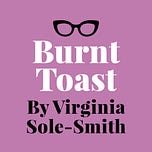



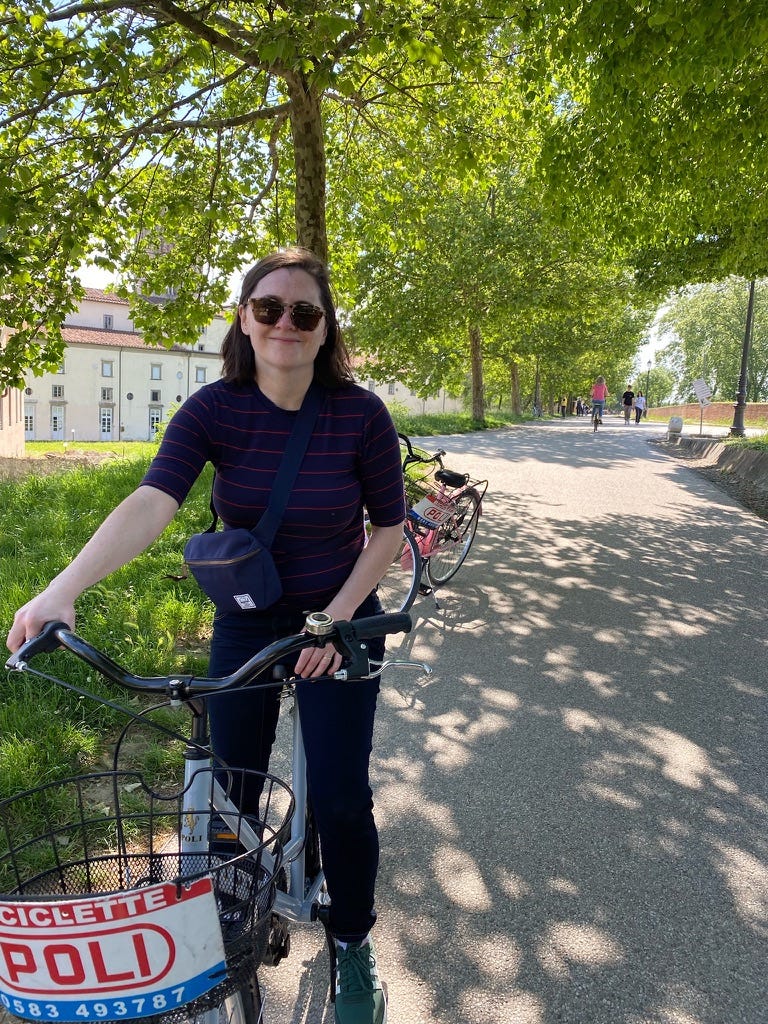

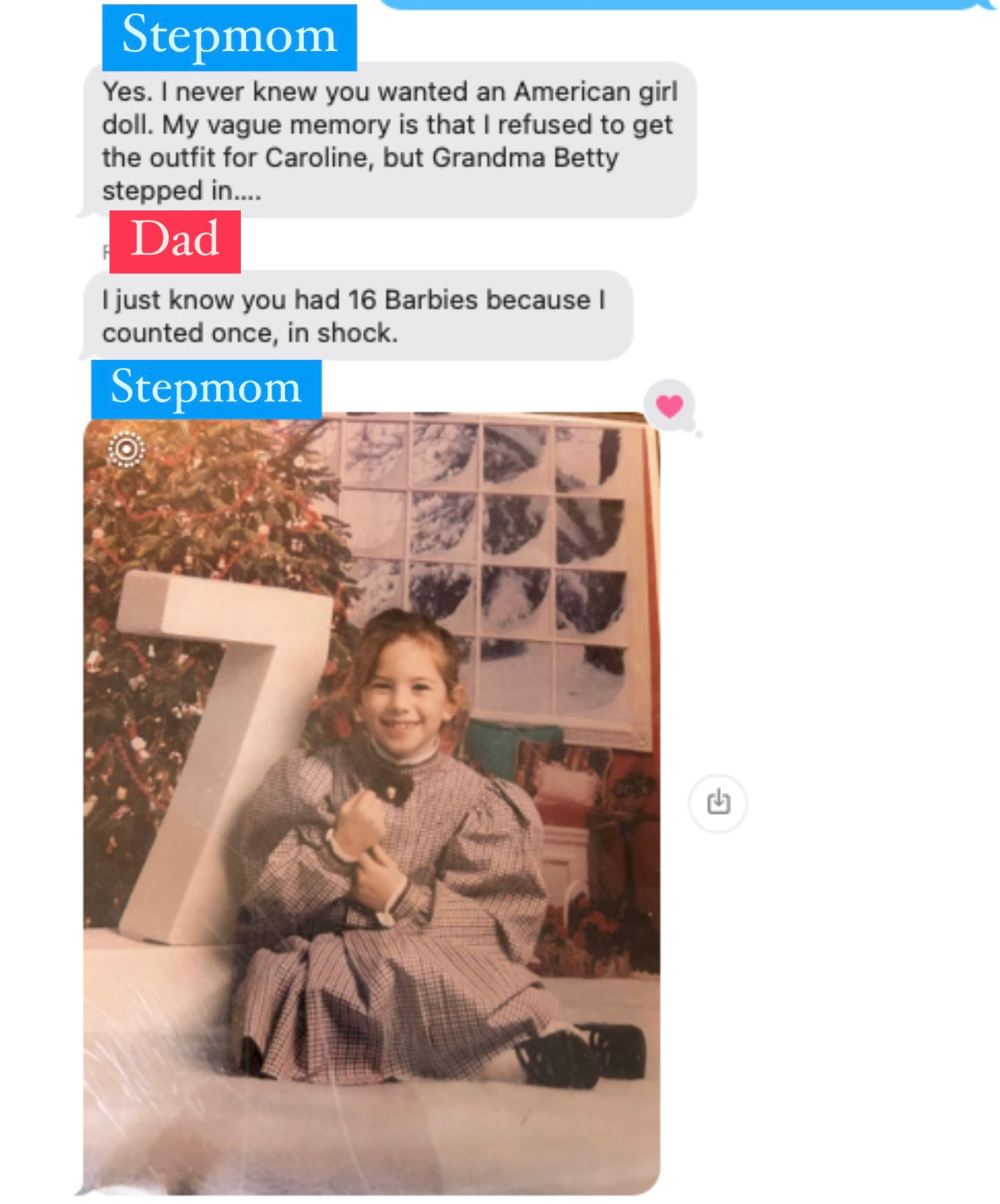



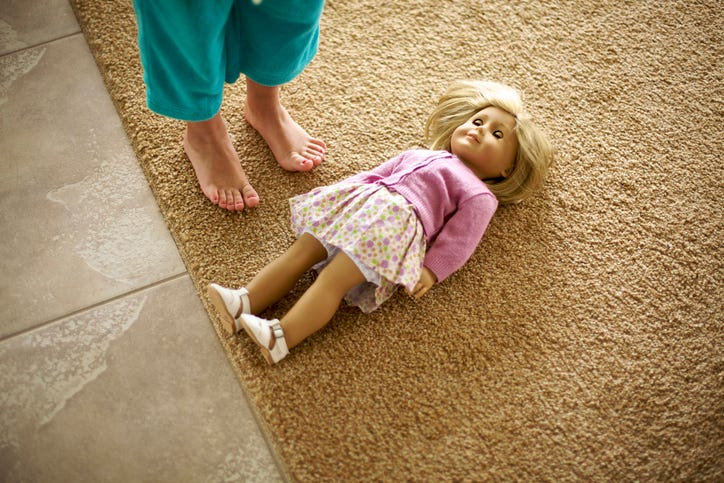
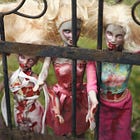


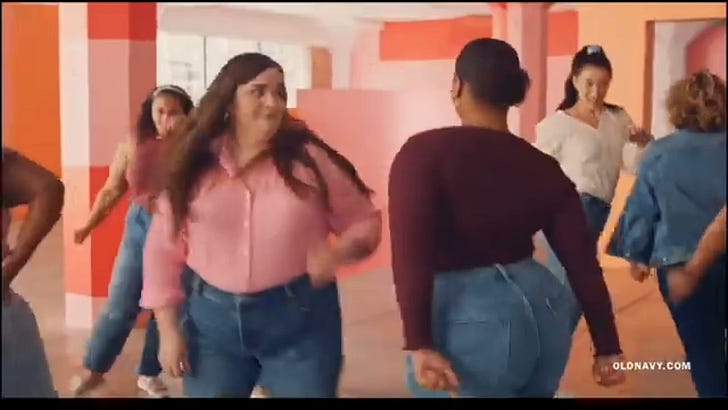
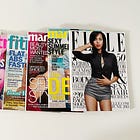
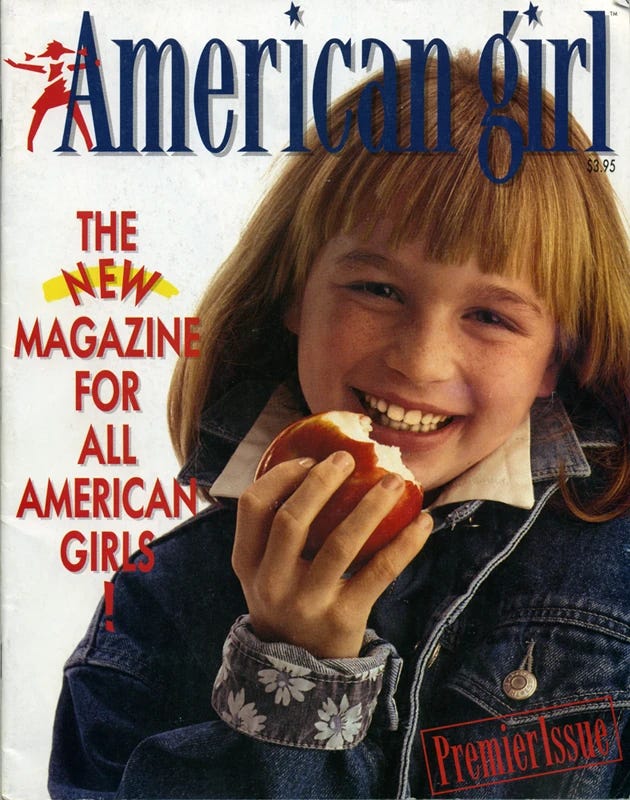


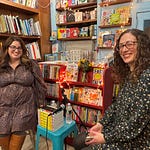
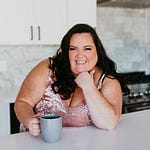
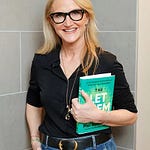
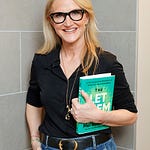
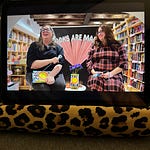

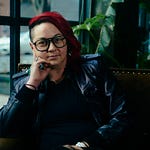

Share this post